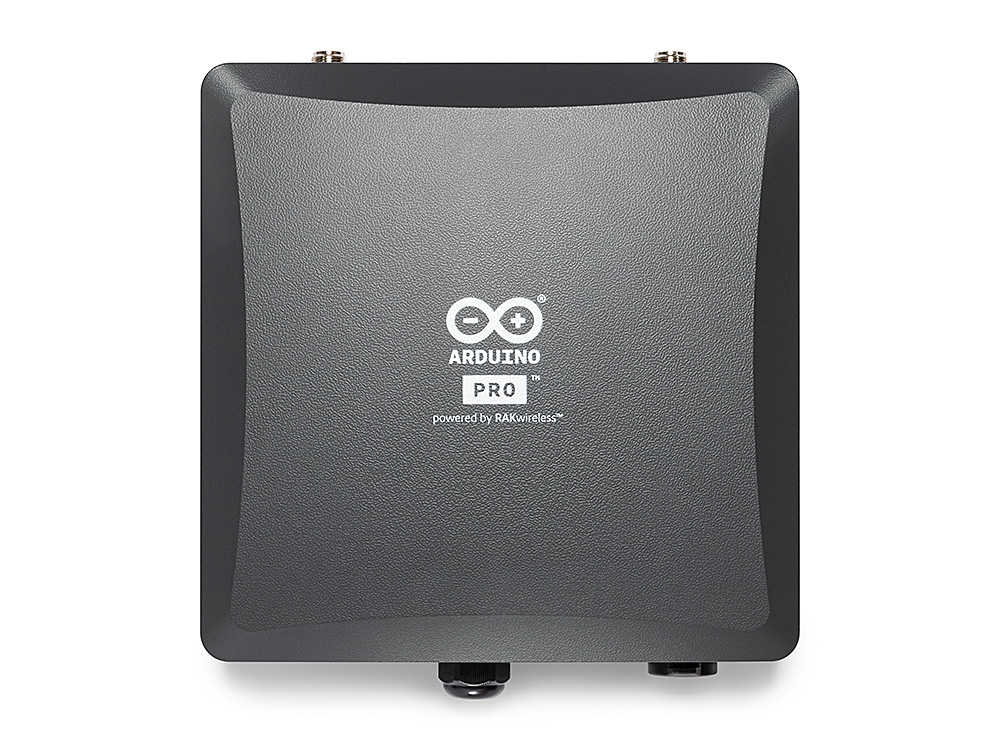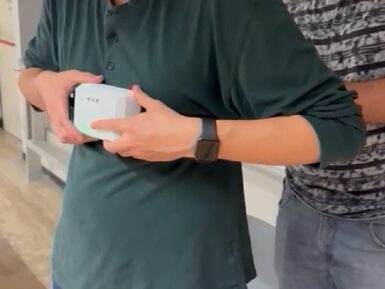
WisGate Edge PRO
Take IoT further than ever with Arduino’s industrial-grade gateways for LoRaWAN® connectivity, designed to easily bring secure and reliable connectivity to your outdoor projects.
Overview
The Arduino Pro WisGate Edge Pro powered by RAKwireless™ ensures secure and reliable connectivity for a wide range of professional applications and is suitable for medium-sized to wide area coverage in industrial environments and remote regions. Its high transmission power and 2x fiberglass antennas with 5dBi gain provide extensive coverage in open environments, making it the perfect fit for IoT commercial outdoor deployment – required for example for parking sensors, remote fleet management, livestock tracking and geofencing, and soil monitoring solutions that maximize crops’ yield.
It offers an intuitive out-of-the-box user experience for easy setup and diagnostics, as well as exhaustive tutorials and technical documentation, and includes an on-pole and DIN-rail installation kit.
Complementing the MKR and Portenta SOM boards, the Arduino IoT Cloud platform and the other LoRa® components in the Arduino ecosystem, WisGate Edge Pro enables you to create and deploy complete and industrialized IoT/IIoT and I4.0 applications – wrapping both RAKwireless™’s specific expertise and Arduino’s smooth user experience into high-quality solutions that connect your LoRa® devices better than ever, from smart cities to smart agriculture.
Key benefits include:
- Ideal for IoT commercial outdoor deployment
- High transmission power and 2x fiberglass antennas with 5dBi gain
- Limited cabling for installation thanks to Power over Ethernet (POE)
- Kit for installation on pole and DIN-rail with included adapter
- Rapid setup and diagnostics, backup and data logging thanks to SD card slot
- Secure Ethernet, Wi-Fi or LTE connectivity
- WisGateOS, powered by RAKwireless™, based on open source OpenWRT and fully customizable
- Ideal to implement private networks directly connected to cloud platforms; compatible with public networks
- Comprehensive technical documentation by RAKwireless™
Looking for an indoor gateway for LoRaWAN® connectivity?
Check out WisGate Edge Lite 2, designed especially for applications needing deep indoor coverage.

Need Help?
Check the Arduino Forum for questions about the Arduino Language, or how to make your own Projects with Arduino. If you need any help with your product, please get in touch with the official Arduino User Support as explained in our Contact Us page.
Warranty
You can find your board warranty information here.
Tech specs
| Processor | MT7628, DDR2 RAM 128 MB 32 MB flash memory 2x SX1303 LoRa mPCIe cards |
| LoRa® |
|
| Interfaces |
|
| Connectivity |
|
| Dimensions | 240 x 240 x 80 mm |
| Software Features | OpenVPN, Ping Watch Dog, SSH2, NTP, Router module NAT, Firewall, Wi-Fi AP mode, DHCP Server/Client, MQTT/S Bridging, LoRa® Data Logger, LoRa® Statistics, LoRa® Frame Filtering, GPS |
| Power supply |
|
| Antennas |
|
| Certifications | CE, FCC, ACMA/RCM, UKCA IP 67 rating |
| Operating Temperatures | -30° C to +55° C (-22° F to 131°F) |
Conformities
Learn more
Get Inspired

For children who experience certain developmental delays, specific types of physical therapies are often employed to assist them in improving their balance and motor skills/coordination. Ivan Hernandez, Juan Diego Zambrano, and Abdelrahman Farag were looking for a way to quantify the progress patients make while simultaneously presenting a gamified approach, so they developed a standalone node for equilibrium evaluation that could do both. On the hardware side of things, an Arduino Nano BLE 33 Sense Rev2 is responsible for handling all of the incoming motion data from its onboard BMI270 six-axis IMU and BMM150 three-axis magnetometer. New readings are constantly taken, filtered, and fused together before being sent to an external device over Bluetooth Low Energy. The board was also connected to a buzzer and buttons for user inputs, as well as an RGB LED to get a real-time status. The patient begins the session by first putting on the wearable and connecting to the accompanying therapist application. Next, a game starts in which the user must move their torso to guide an image of a shark over the image of a stationary fish within a time period — ultimately trying to get the highest score possible. Throughout all of this, a vision system synchronizes its readings with the IMU sensor readings for an ultra-detailed look at how the patient responds to the game over time. To read more about the project, you can visit the team's write-up on Hackaday.io.













